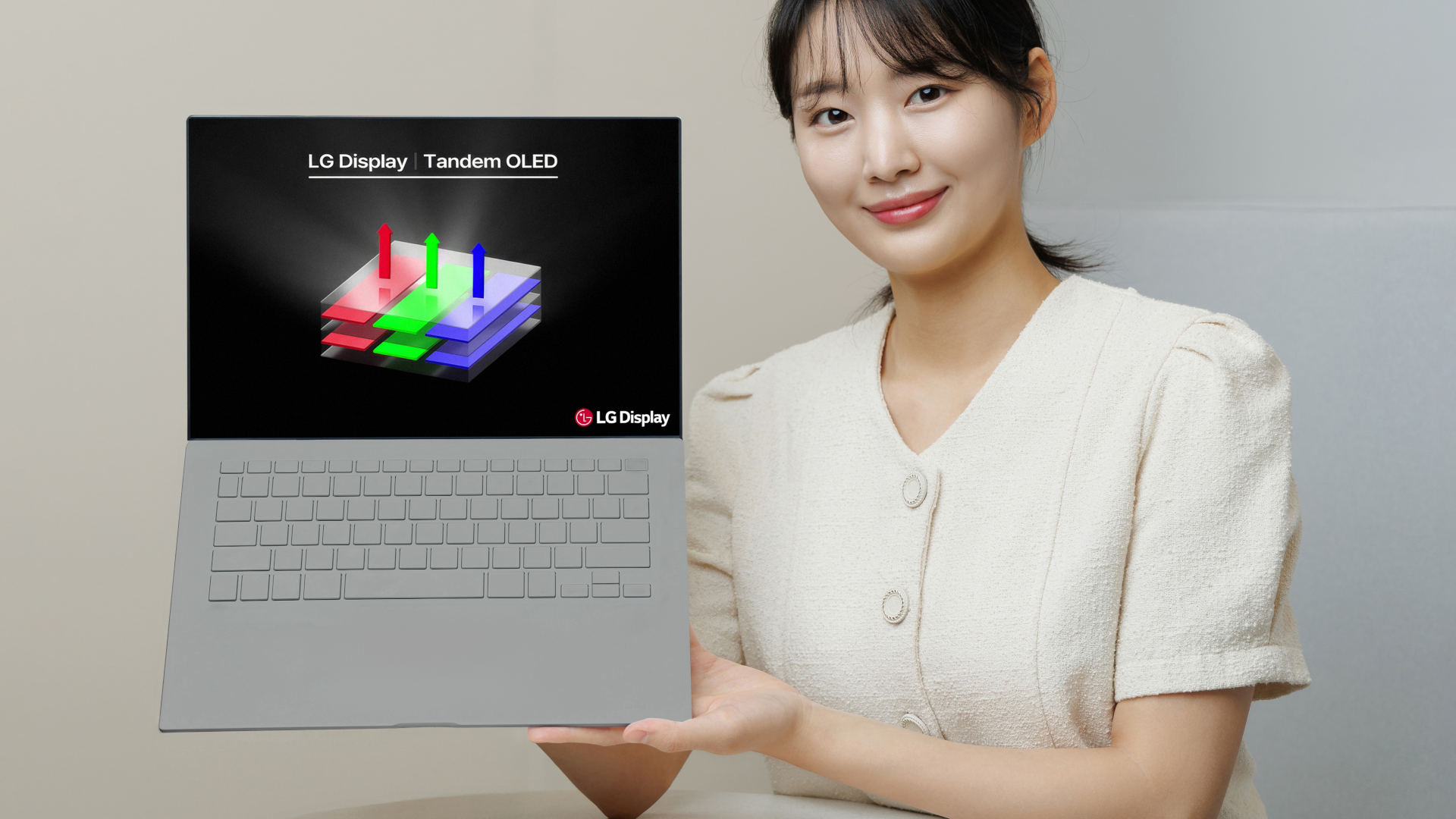
All of us in the PC Gamer office love great OLED displays for gaming, thanks to their super fast response times, wonderfully rich colours, and superior HDR performance. What we're not so keen on is the fact that none of them are very bright and there's always the issue of how long they'll last before burn-in ruins them. Well, LG has announced a new OLED display for laptops that aims to solve those two problems in one…by using two OLED panels.
The tech has the simple name of tandem OLED and if you think that you've heard of this before, then you'll be right—Apple has implemented the system in its recently updated iPad Pro range. Whether those tablets are using LG's panels isn't clear as Apple is known to use Samsung for display screens, as well as LG, but I should imagine it won't be long before Samsung offers its own tandem screens.
Tandem OLED panels have actually been around for a number of years, and has been used in automotive displays for a while because of its greater endurance, but only last month were such displays announced for VR headsets, watches, and TVs. What's special about today's launch is that these are specifically designed for laptops, with the first model being a 13-inch 2880 x 1800 touchscreen, with a 100% DCI-P3 gamut and True Black 500 HDR VESA certification.
In LG's press release, it makes some pretty bold claims: "It can deliver double the lifespan and triple the brightness of a conventional single-layer OLED display, while reducing power consumption by up to 40%...LG Display has been able to make it around 40% thinner and 28% lighter than existing OLED laptop screens."
Tandem OLED is much brighter than traditional OLED screens because it uses two layers of self-emissive organic LEDs. But if two layers are required, how on Earth can it be thinner and lighter, you might ask? LG isn't saying anything right now but I suspect it's down to the connecting layer that's sandwiched between the two light-emitting layers, which transmits charge from one OLED panel to the next.
LG has probably found a way to make this very efficient (hence the big increase in brightness and drop in power consumption), reducing the need to use particularly powerful OLED layers (which, in turn, probably allows them to be thinner and lighter).
Tandem OLED screens can be made with more than two self-emissive layers, for even more brightness, but then you're running into serious cost problems. The latest OLED gaming monitors are all very expensive, and I can't imagine LG's new tandem screen for laptops will buck that trend, so it'll be a good while before dual-layer OLED monitors are as cheap as a quality IPS display.
Arguably it's those desktop monitors that could really do with the tandem OLED help, more so than in our notebooks. Laptop OLED panels are already pretty damned special, but on the desktop we're still left wanting for full-screen brightness, and that's why the promise of this tandem technology is so tantalising. Given that we're starting at just 13-inch though, it's likely to be a while before the tech filters down to large desktop monitors.
But even so, we've come a long way since 2008, when you could buy the first OLED TV on the market—an 11-inch 960 x 540 display—for $2,500. Today, that would buy you a 32-inch 4K gaming OLED monitor and still have over $1,000 left over.







